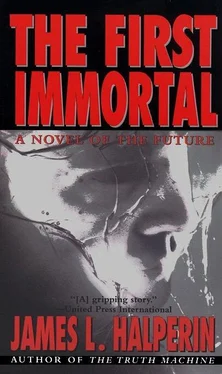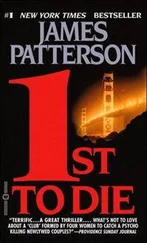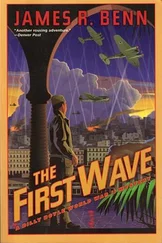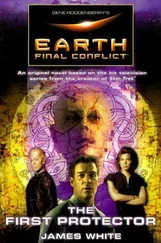Like most early morning commuters, he donned his virtual reality helmet and set to work. The eighty-mile trip would require forty-eight minutes. Once again, Brandon ran the disc:
A closed fist strikes her face. She stumbles backward against the wall of the welfare apartment, cracking the plaster. The furniture is flimsy and old, the tiny room dilapidated, yet clean and orderly. “Don’t do this, Jeff,” the woman implores, half begging, half mocking, as though more curious than scared.
Her hands are loosely bound in front with a white cotton handkerchief that does not block her 360-degree wristband camera. The mans AudioVid recorder is running, too.
The woman is in her mid-twenties, inexpensively dressed, pretty in spite of the burgeoning welts on her face. Her eyes reveal a brisk, defiant intelligence (which almost reminds Brandon of Jan Smith in their college days).
Her male assailant is slightly older, maybe thirty, tall and muscular, wearing boots, blue jeans, and a tattered undershirt. Two small tattoos decorate his left arm, and another his right.
The woman’s facial expression turns from hostile disdain to unmistakable fear as the man, eyes unblinking, begins to pour a clear fluid from a metal flask onto her light blue dress. “What the fuck are you doing?” she shouts.
Brandon stopped the VRD, hit the reverse switch, and watched the woman’s face happen and unhappen, then happen again. Insanely, he wanted to yell a warning. The disc continued:
His reddish-brown, deep-set eyes flash a chilling gleam; he brandishes an electronic match. “You ain’t taking my kids away, Stacy. That’s all there is to it. It just ain’t gonna happen.”
She shudders when he activates the match; the feel of it is corporeal, even in programmed form. A four-inch white flame instantly rises from its two tiny metal tines. Her eyes suggest she’s no longer able to convince herself that he’s bluffing.
His voice sounds cold, emotionless. “1 told you I’d kill you first, bitch, now see it comin’.”
She watches, paralyzed in her denial, as he flips the flaming shard toward her skirt.
“No, Jesus, no!” the woman cries as her clothes begin to burn. “What about our kids?” She beats her bound hands at the flames exploding up her dress. Her voice rises and breaks into a wordless cry. Her hair is burning. She collapses to the floor, writhing, hands waving at her blackening face. “Oh, God, it hurts…”
Jeffrey Lewis Cole Sr. stands erect over her, watching calmly. He raises a finger and runs it over his, front teeth, like some disturbed child—fascinated and lured; entranced, but detached. (To Brandon the man is like a robot, remotely operated by a fun-house joystick.)
The woman seems to be trying to speak, but she is no longer capable of it.
Cole waits for the sounds she is making to end, then douses her scorched body with a bucket of water as if extinguishing a trash-can fire. His eyes look away, then return and widen slightly, as though a new, less evil force had somehow appropriated the joystick. He, finds a bedsheet and carefully, almost lovingly, covers the corpse.
Then he calls the police.
Like most of the Massachusetts intelligentsia, District Attorney Butters was starting to view cryonics as something more than a huckster’s dream, a shell game with death. At least the medics had gotten there in time to salvage her brain, he thought. He hoped she would wind up at a legitimate facility.
Of course the wealthiest went to the Phoenix or one of its high-tech competitors, and paid $175,000 for a full-body suspension, or $70,000 for a neuro. But most people couldn’t afford the Phoenix’s rates, especially after Nobine had raised their vitrification-licensing fee again. Also, the less wealthy tended to be more superstitious; many considered freezing only the head to be some sort of sacrilege.
Over the past forty-four months, Nobine et Cie had duplicated its dramatic mouse reanimation only twice in nearly ten thousand attempts. By now some scientists were becoming suspicious of the experiment, but the public still wanted to believe. And ironically, suspensions had actually become less trustworthy. Sporadic regulation amidst blossoming demand for “the product” had nurtured the sprout of opportunism, now attacking the sustaining roots of cryonicism.
Over the past three years, Brandon had spent at least one day a week on what he’d come to regard as “weed-killer duty.” Just three months ago he’d finally managed to close down the Belmont Time Tunnel facility, a converted funeral parlor victimizing the Bay State’s neediest and most vulnerable. In just twenty-two months BTT had happily accepted 8,624 corpses for full-body suspension at an average cost of $9,700 each, payment up front. By the time Brandon was able to obtain a search warrant and raid the place, most of the bodies were missing: apparently cremated, or perhaps even the primary ingredient in a local brand dog food. The “survivors” were typically mislabeled, necessitating problematic DNA scrapes for ID. Virtually none had been treated with the Prometheus Protocol, although most had paid for the procedure.
Yet BTT was far from the worst incident of cryonics fraud Brandon had seen.
He would have preferred the entire field to be regulated. Sure, he understood the “inefficiencies” that typified government intrusion into any enterprise, but he also considered government oversight essential to prevent fraud in emerging sectors of commerce. To Brandon, the next best thing to regulation would have been the discovery of a second proven successful protocol—to create competition and lower prices. But what hope was there of that occurring anytime soon?
Brandon entered the antechamber area at the Boston Capital-Crime Stockade. It was only two blocks from his office, a fortunate convenience. He still averaged eleven visits to the stockade weekly, but in 2005, the first year of Swift and Sure, he’d been forced to call on nearly two thousand of the “walking dead,” almost eight a day. Ever since his historic, bipartisan appointment in 2004, District-Attorney Butters had insisted on meeting every condemned inmate in his jurisdiction.
“Do you need a Cyber Partition, Mr. Butters?” the administrator asked.
“No, thanks. This one’s not dangerous.”
He strode unescorted through the bright, stainless aisles, various checkpoint machines scanning the shape of his hand, his retinal patterns, or his voice. Doors slid open automatically and slammed shut behind him. At last he entered the stark white cubicle of Jeffrey Lewis Cole Sr.
“Mr. Cole,” he said quietly.
“Mr. Butters.” The acknowledgment was calm, matter-of-fact. Cole had less than an hour to live. The visit was expected.
“Anything I can do for you? Anything you want to talk about?”
“Yes, sir.” The condemned man handed him a chip the size of a thumbnail. “Would you make sure my kids get this recording in about ten years’ time?”
Brandon nodded.
“That’s when I figure they’ll be old enough to understand, maybe even believe I love ‘em despite what I did. And please tell them how sorry I was today. There’s no excuse for it; I know that. I musta lost my mind. That had to be it. Musta just lost my mind.”
“If only you’d accepted the counseling…” Brandon began, then thought: This guy’s gonna be dead in fifty-two minutes. What on earth am I doing?
“And the drug therapy,” Cole took over for him. “I know, I know, after that first time I hit her, I shoulda known I was fucked up. That’s what the prison shrink told me back then, too. But I figured I could control the anger myself, y’know? Didn’t figure I was nuts or anything. But I guess I was—am. And when Stacy told me she was divorcing me, I just musta snapped.”
Читать дальше












